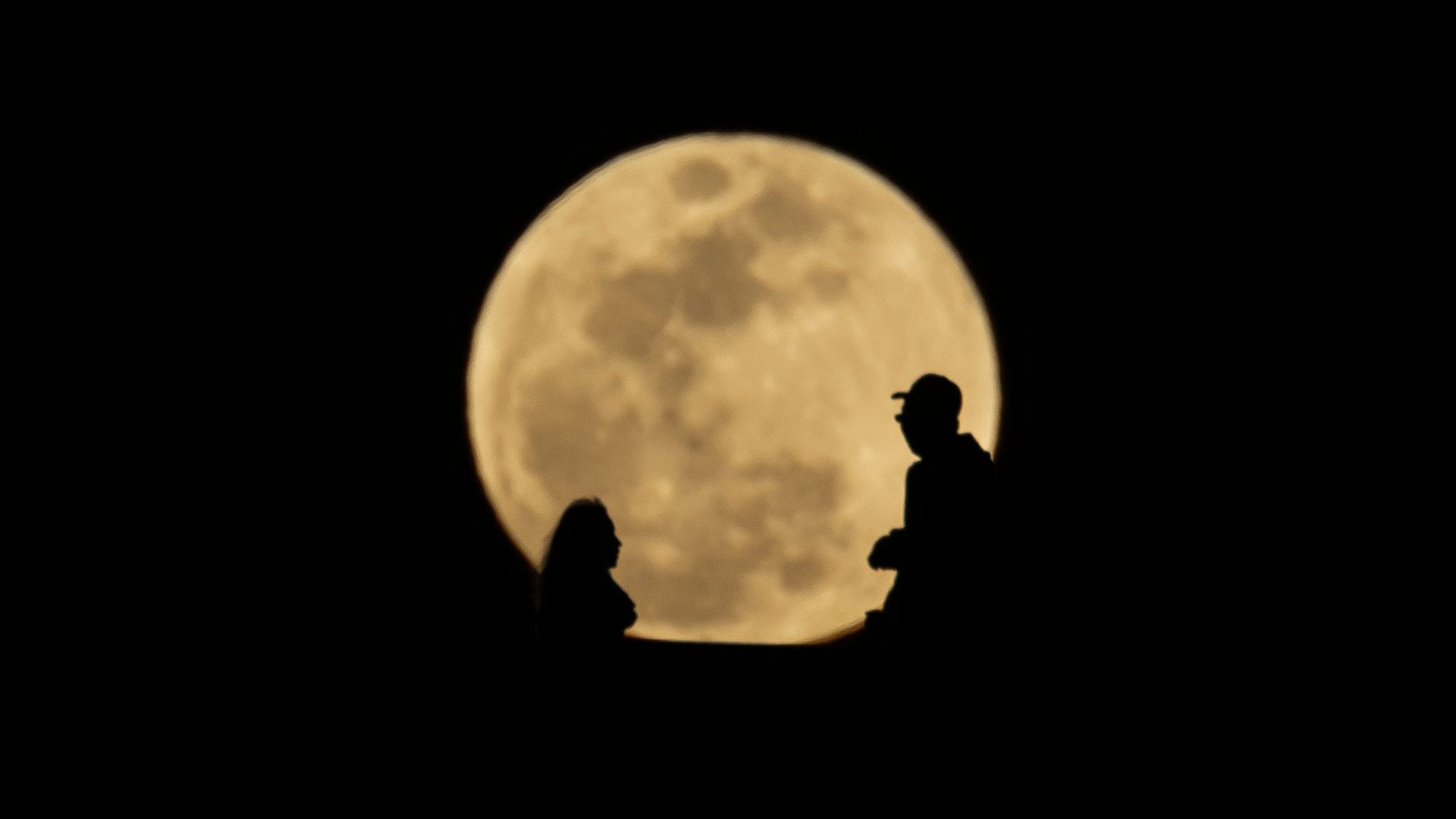Science
Fascination full moon: What is imagination and what are facts?
Updated on April 11th, 2025 – 4:00 a.m.Reading time: 3 min.
Does the moon influence us in a mysterious way? Science does not already have a clear answer in every aspect, for example when it comes to sleep. The earth drabant definitely has to do with Easter.
The first full moon in spring falls on April 13 this year. People have been fascinated by the night sky for millennia. The moon shaped our sense of time, inspired imagination and art. But he still has his secrets.
The language history reveals a lot: “Lunatic” stands for an insane in English. The term goes back to the Latin word “Luna” for the moon. It reflects a popular belief that was spread in the Middle Ages: after that, the celestial body had an impact on feelings and behavior.
The word in German has been in a mood. Beethoven’s moonlight sonata or Matthias Claudius “Poem” The Moon has clearly sounded emotionally. In addition to facts, there are also a scientific puzzle as well as whether the moon can really district.
The Swiss chronobiologist Christian Cajochen studies the human clock at the University of Basel, for example with a view to shift work. “But when it comes to the subject of moon and sleep, many researchers are rather reserved,” he says. Just setting up a reputable study in the sleep laboratory is difficult as soon as volunteers knew that it was about the moon. “This immediately has a psychological influence and can falsify results,” says Cajochen of the German Press Agency (dpa).
At Cajochen’s institute there was a full moon effect in retrospect from a study that was actually about Alzheimer’s. For this purpose, healthy people stayed as a control group in the isolated laboratory.
When looking at the data, it was shown that the test subjects were more active in the evening in the evening and slept worse. The result surprised Cajochen, which had no esoteric tendency and would rather have refuted a belief. His conflict hesitated him before publishing the findings in 2013.
“The media interest was massively large, and the scientific massively small,” he reports with a smile. In 2021, a US study, which compared the influence of the moon on people in rural Argentina, partly compared to students in the city of Seattle without electricity, almost identical results. However, other studies did not record such effects.
“It’s still a mystery,” summarizes Cajochen. “Strictly scientifically, the same people would have to be observed under laboratory conditions over two whole months to find out whether they really have inner moon watches.” Circalunar means that in science. Researchers have already occupied such watches for some animal species. Proof remains difficult for humans. “For a study, it would probably be missing from volunteers and money,” says Cajochen. And even then there is probably no automatic explanation for the observations.
It is easier to explain the influence of the celestial body on the calendar: the moon is already in the word month. It takes about 28 days for it to circle the earth. That was the basis for the original division of the months in many calendars.
With the Romans and at the end of the 16th century refined in the Gregorian calendar, the solar year prevailed: after that, most months have 30 or 31 days. However, the Easter date remains connected to the earth drabant: it falls on the first Sunday after the church -defined full spring moon – and can therefore lie sooner or later a year. If a Christian church does not count according to the Gregorian calendar, the festival shifts further.












